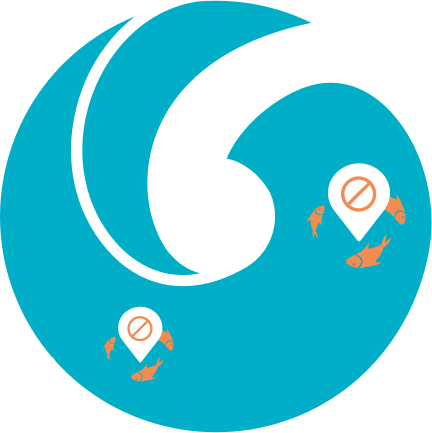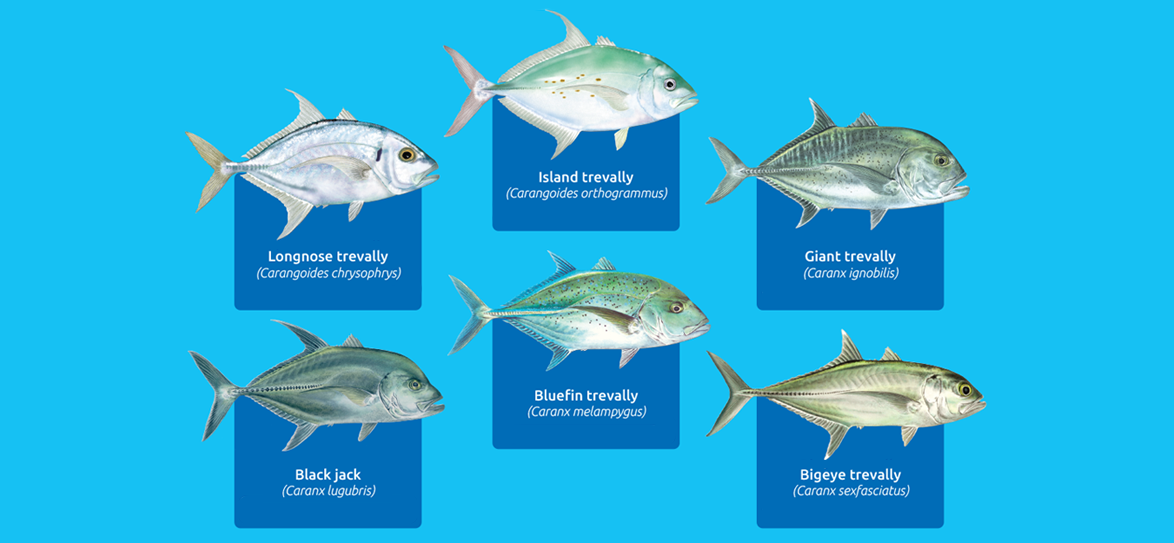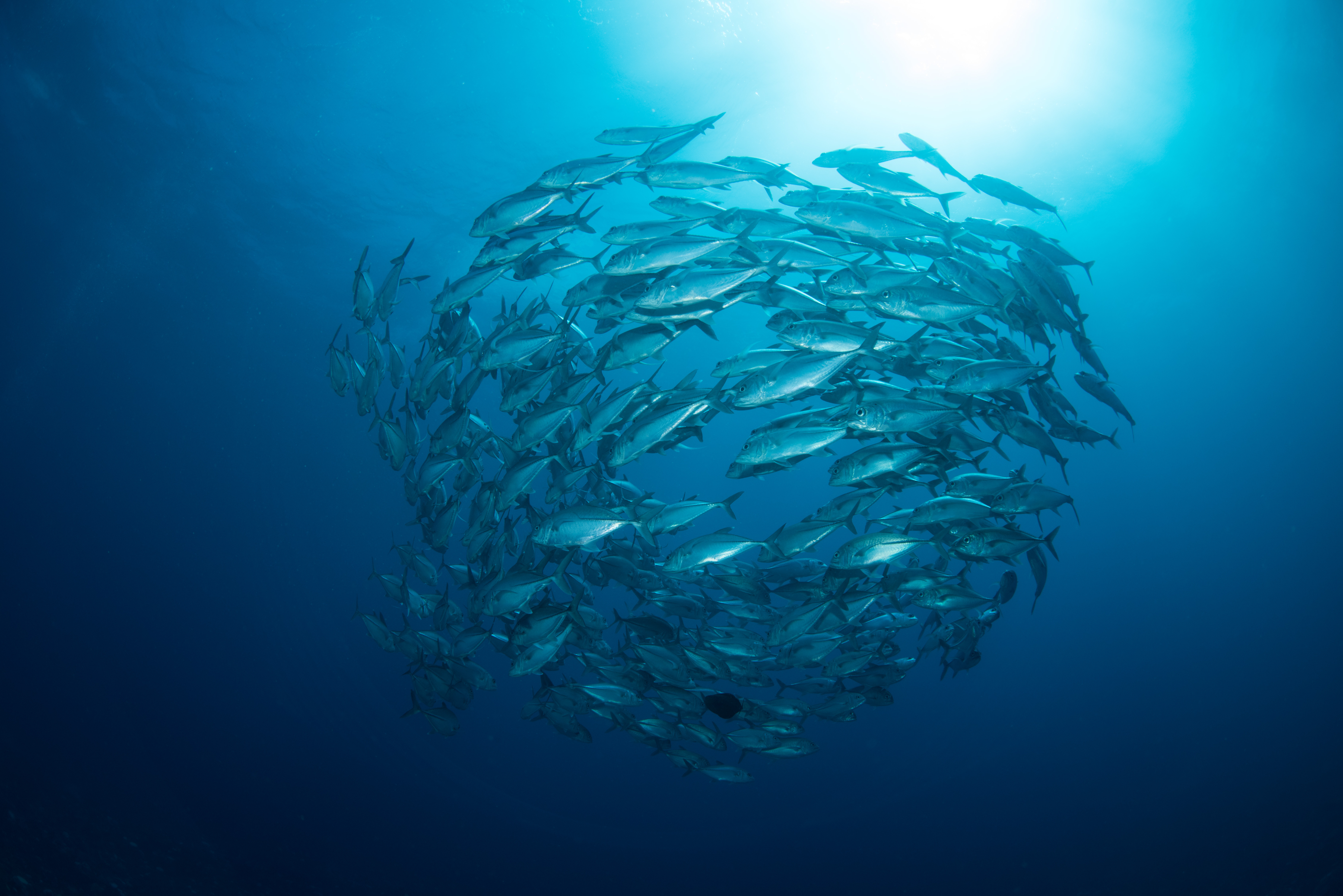Image: © Matthieu Juncker
To gain access to full information on trevallies, download the information sheet produced by the LMMA Network and SPC.
If you have noticed a decline in your catches or are concerned about trevally populations, here are some priority actions the community can consider in addition to national regulations:
Fish smart rules
Temporary bans
A ban on fishing during the peak of the spawning season, which may require a number of short closures when trevallies aggregate, perhaps at times related to the cycle of the moon;


Tabu areas
A ban on fishing at known spawning areas or sites, which may be the outer edges of reefs or near reef passages; the small drifting forms produced at such spawning sites are likely to settle on other reefs, including fishing areas, particularly those in down-current places.
Gear restrictions
A ban on overly efficient fishing methods such as gill nets;
A ban on small-mesh gill nets; a minimum mesh size may allow smaller fish to escape and grow to a size at which they can reproduce.

Good to know: trevallies often travel long distances to particular spawning sites
Establishing a fixed community-managed reserve where no fishing is allowed (a no-take area) will not protect trevallies because they move from reef to reef and often travel long distances to particular spawning sites. Many local fishers will have some local knowledge of the timing and location of spawning aggregations, however, which makes seasonal bans and tabu area options possible.
Fishing methods
Trevallies are caught by casting and trolling using artificial lures, jigs and natural baits. Gill nets, cast nets and various traps are also used. Trevallies are also important in sports fishing.
Some species have been reported to be responsible for ciguatera poisoning (see the glossary in the Guide to Information Sheets).
Management measures in the region
Authorities in several Pacific Island countries have imposed minimum size limits for trevallies (variously 25 to 30 cm length from the tip of the mouth to the middle of the tail).
Although separate minimum sizes have sometimes been used for scads and smaller trevallies, in many cases the particular species of trevally to which the minimum size regulations apply has not been stated. Taking into account the variation in sizes of the different species, these size limits would not allow larger species to reach breeding size. To be effective, size limits should be applied to individual species.
Some fisheries authorities have the ability to declare closed fishing seasons but this regulation would be difficult to apply in different regions where trevallies may have different breeding times and areas.
Some species

The Carangidae family of fish contains approximately 200 different species of trevallies, jacks and scads distributed in all oceans.
Many species of medium to large trevallies are found across the Pacific Ocean as far as Hawaii including the island trevally, Carangoides orthogrammus (reaching lengths of 75 cm), the bluefin trevally, Caranx melampygus (90 cm), the six-banded or bigeye trevally, Caranx sexfasciatus, (150 cm) and - the giant trevally, Caranx ignobilis, (160 cm).
Most trevallies live in a wide range of offshore and inshore habitats including coral reefs. Juveniles are sometimes found in less salty water in river mouths. Many species are active at night feeding up in the water as well as on the sea floor.
Trevallies are fast-swimming fish that hunt for small fish. Some species dig in the sea floor for worms, shrimps, crabs and other small burrowing animals. Trevallies have small teeth and usually swallow small fish whole.
Trevallies have separate sexes. Many common species appear to reach reproductive maturity at lengths between 35 and 56 per cent of their maximum size. The giant trevally, for example, grows to about 160 cm and 80 kg over a lifespan of about 24 years and reaches reproductive maturity at a length of about 60 to 95 cm when they are between 3 and 5 years old. The smaller bluefin trevally, which grows to 90 cm, reaches sexual maturity at between 30 and 40 cm at an age of about 2 years.
Many species travel long distances to breed in large numbers (in spawning aggregations). The areas at which they gather (spawning sites) are often at the outer edge of fringing reefs or near reef passages. These aggregations often occur as waters become warmer and at times are related to the cycle of the moon.
During spawning, each female releases many thousands of eggs into the water and these are fertilised by sperm released by males. The fertilised eggs hatch into very small forms (larvae) that drift in the sea for periods often greater than a month. Less than one in every thousand of the small floating forms survives to become a young fish (juvenile).
When the drifting forms settle out as juveniles these may enter inshore shallow water and move out to deeper reefs as they grow. Less than one in every hundred juveniles survives the 2 to 5 years that it takes to become a mature adult.
Related resources

To gain access to full information on trevallies, download the information sheet.
